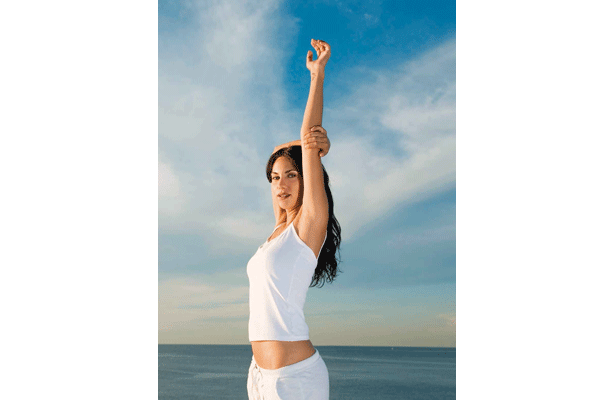To achieve success – getting fitter, healthier, more confident, or whatever – you need to create a picture of it in your mind, scientists say. Here, the steps.



You know that athletes use visualisation to give themselves an edge and calm their nerves before a big competition. (Remember PhelpsFace from the Olympics?)
“When you imagine yourself performing a task, your muscles contract as though you’re actually doing it. The contractions are so small, you can’t feel them, but it’s enough to strengthen your muscle memory,” says Nicole Detling, an assistant professor of kinesiology and sport science at the University of Utah, and a sports psychology consultant to Olympic athletes.
In other words, when you mentally rehearse a tennis serve or swimming stroke, you’re essentially doing it physically as well.
As evidence: People with wrist casts who visualised moving their immobilised muscles lost half as much strength as those who didn’t imagine exercising, research in the Journal of Neurophysiology found.
Visualisation can help hone your technique too. Female basketball players who imagined themselves throwing perfect free throws just before a game wound up making 70 per cent of their shots, while those who didn’t sank 54 per cent, a New Mexico State University study found. It can even rev motivation, according to research in the journal Psychology of Sport and Exercise. In the study, women who pictured themselves working out were significantly more driven to exercise than those who didn’t.
And now experts are discovering that the perks of visualisation go far beyond fitness.
New research has verified its effectiveness for everyone, showing that the technique is extremely powerful at improving confidence, reducing stress and boosting performance.
That’s because your brain respond0s to visualisation the same way your muscles do, says Philip Post, assistant professor of motor learning and sport psychology at New Mexico State University.
“When you imagine yourself reacting a certain way to a certain event – like being calm and in control while giving a speech at a wedding – it strengthens the neurological pathways you need to actually respond that way,” he says. Once the big moment arrives, you’ve “done” it so many times mentally that you’re much better prepared to keep your cool.
Best of all, it takes just 10 minutes a day of visualisation to start seeing the benefits, Nicole says, and you could notice changes after just one session.
We walk you through the important steps.
First, you need a goal Be sure that what you want to achieve is clear and measurable, then ask yourself exactly what you need to do to make it happen, Philip says.
If you want to run faster, the first step is to gradually increase your pace. If your goal is to deliver that great wedding speech, you might start by practising in front of the mirror to get comfortable reciting it and build up your confidence. Being specific about the actions you’ll take to reach a goal lets you create a more targeted mental picture, which in turn activates the corresponding brain pathways, leading to faster, stronger results, he adds.
Now add on layers To begin, imagine yourself doing the action from start to finish – crossing the finish line with perfect form or reciting the speech to applause, for example. Then “layer” on your senses, Philip says. What will you be seeing, hearing and even smelling in real life? “You want to try to make the imagery process as functionally equivalent to the physical practice as possible, in order to help activate the relevant brain regions to the greatest extent,” he says.
“If you’ll be giving a speech, for instance, stand up as you’re visualising it – you can even put on the same outfit you’ll be wearing on the big day.”
Imagine how you’ll overcome obstacles Think about what challenges you’ll face in real life.
“Say to yourself: ‘OK, I’m up there in front of the crowd – how do I feel?’ Maybe you’re nervous and shaky. Imagine how you’ll modify that response by taking a few deep breaths to slow your heart rate or smiling to reassure yourself,” Philip says.
To run faster, picture your muscles feeling fatigued or sore towards the end of the race, then see yourself maintaining the correct form anyway. “What you’re doing is creating a memory that’s flexible enough to adapt to any circumstances,” he says.
Finally, pair it with practise While studies show that visualisation alone can positively influence performance, the latest research suggests that combining imagery with actual practise is essential for it to make a substantial difference consistently, Philip says. Do your running speed work or give your speech to a small group of friends in addition to your mental practise routine.
Then when you’re at the race’s starting line or about to walk out in front of the wedding guests, take a few seconds to quickly cycle through your visualisation for one last surge of confidence.























